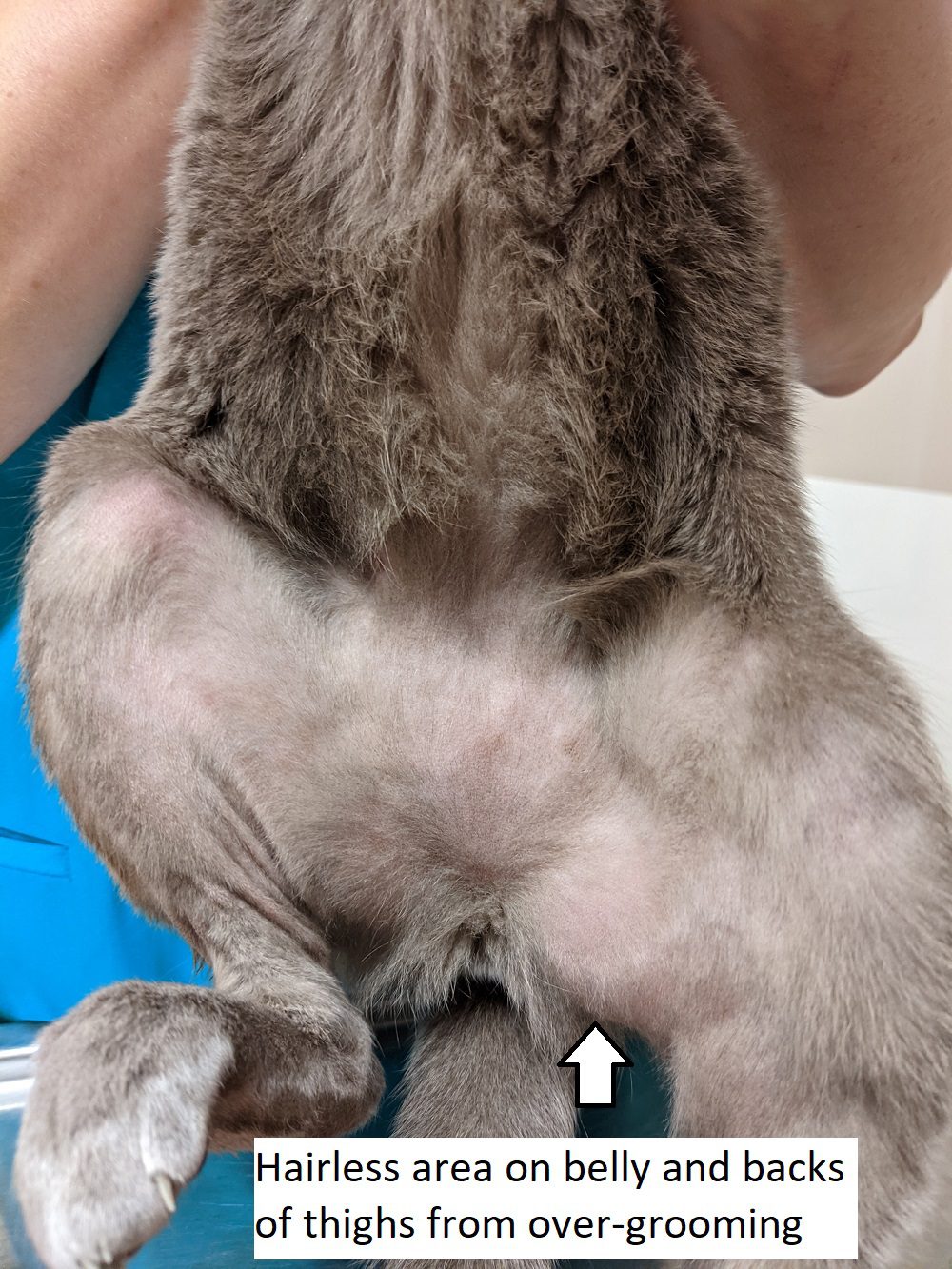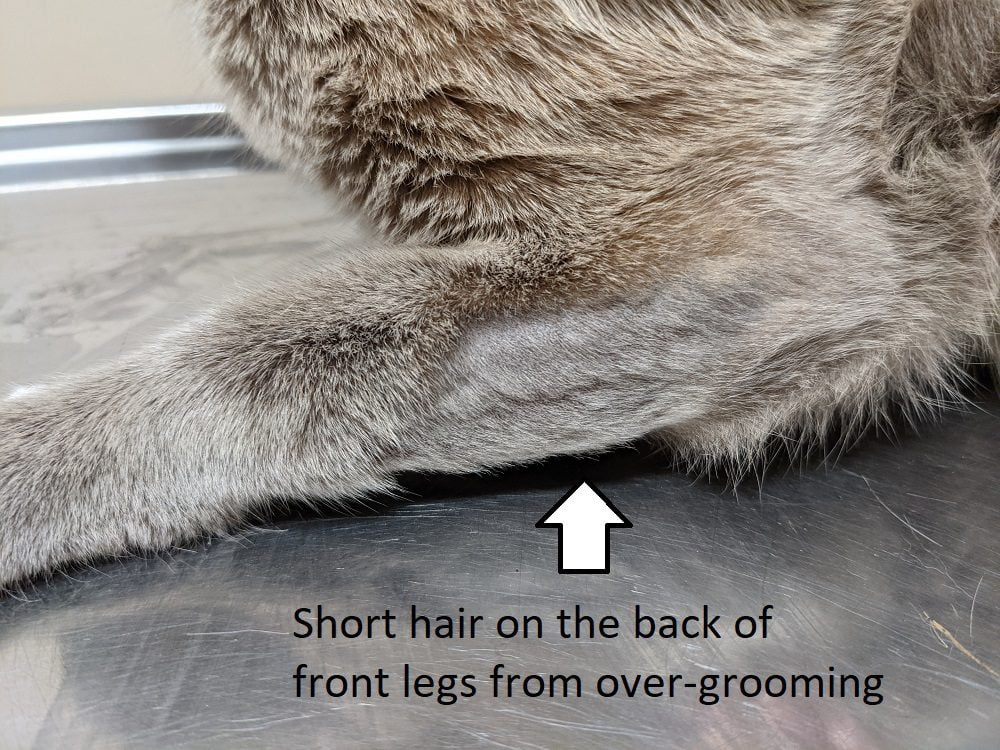Over-grooming in cats
Cats will often have an interesting skin condition called over-grooming.
They will lick at their fur compulsively so that all the fur falls out in the area they are licking. Sometimes cats are left with short, fuzzy fur on the area that is over-groomed. Other times over-grooming can lead to red swollen and infected skin.

Over-grooming usually occurs in distinct areas and is very symmetrical. The main area involved is usually the belly, but the inner thighs and back of legs can also be over-groomed.
Hairless areas can extend up under the chest, along the side of the body and even up to the front legs.

What causes cats to over-groom?
When fleas used to be a problem, most over-grooming was caused by flea bites. Even if fleas are not seen, any cat that over-grooms should be on regular flea control throughout the year. Just one flea bite per week is enough to stimulate your cat to over-groom.
Cats can still over-groom in totally flea-free environments. It is assumed to be an obsessive-compulsive disorder. Once the skin becomes irritated by over-grooming, infections of the skin can exacerbate the condition.
How do you treat over-grooming?
Cat’s that over-groom are generally managed rather than cured. The condition may settle at times and then suddenly recur. To manage over-grooming:
- All cats should be on long-acting flea control recommended by your vet
- Secondary infections may need to be controlled with antibiotics
- Sometimes anti-puritic (anti-itching) medication can be helpful
- Cats that are traumatizing their skin may need to wear an Elizabethan collar to minimize this damage
- Behavioural treatment to manage obsessive-compulsive disorders include
- Pheromone treatment
- Anti-anxiety medication
- Enrichment techniques for your cat to feel more settled
